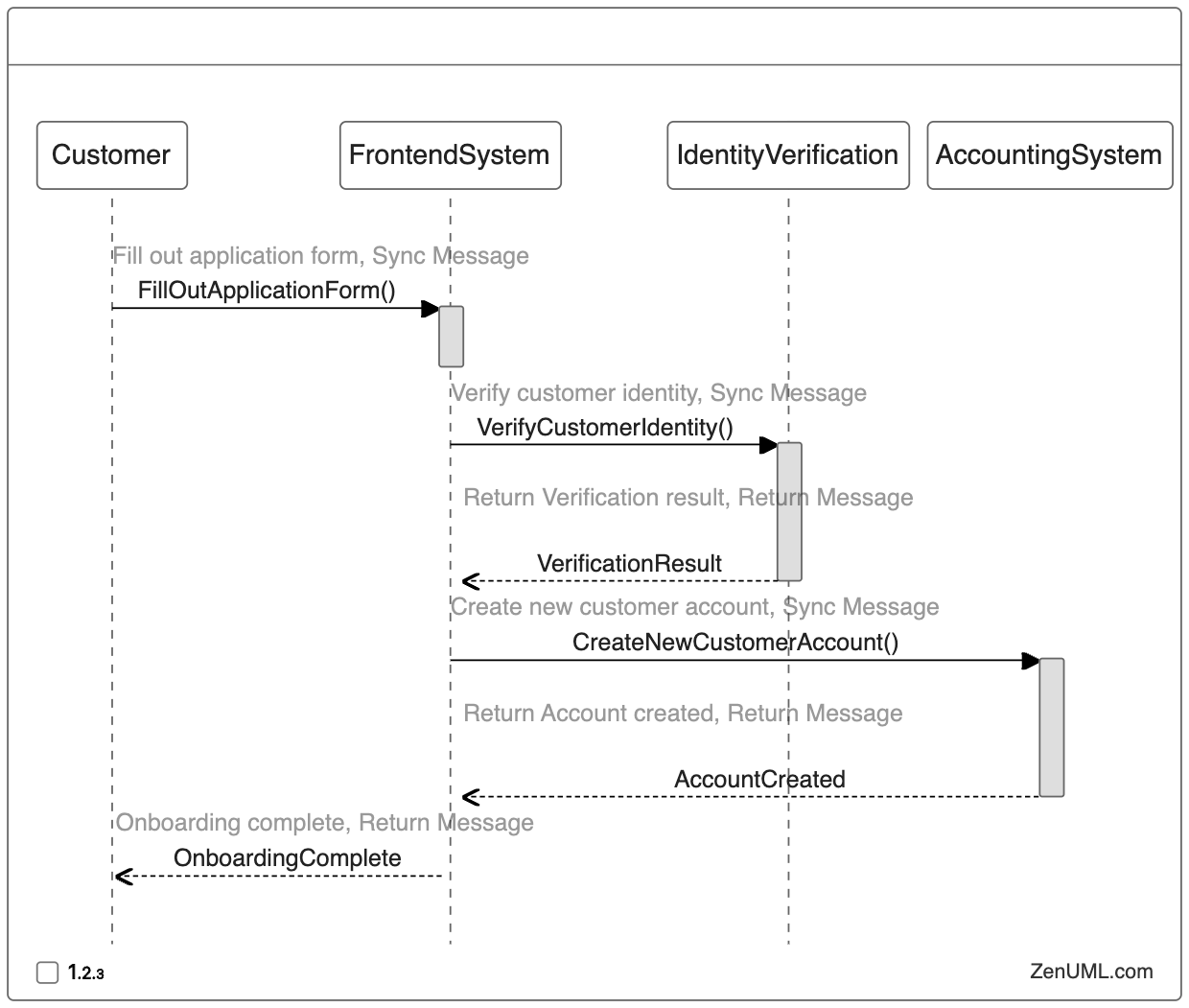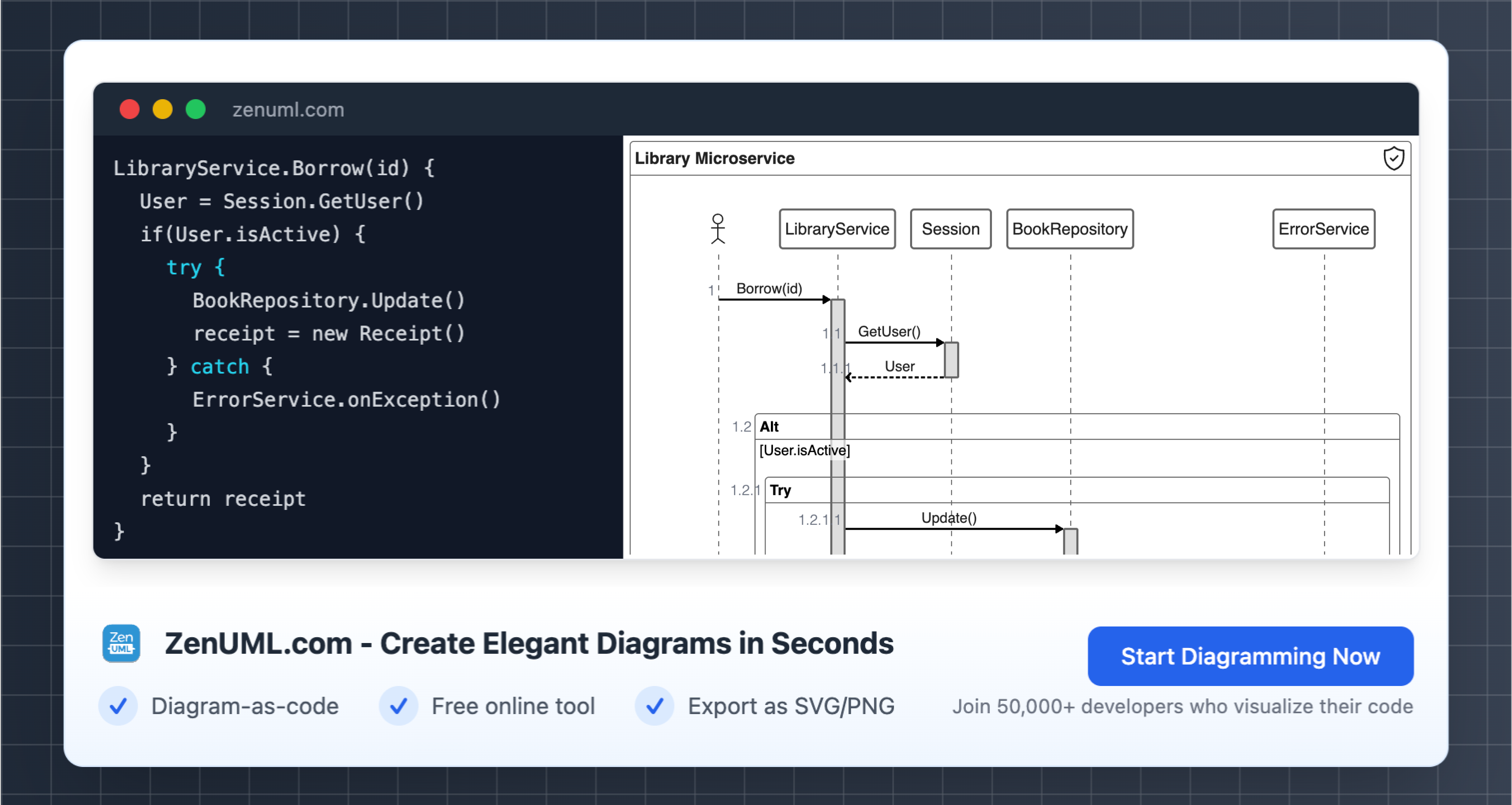Introduction
As the complexity of modern business systems continues to grow, the need for a comprehensive and strategic approach to enterprise architecture has never been more important. At the heart of this discipline lies the ability to effectively communicate and visualize the intricate relationships between various components and processes within an organization. One powerful tool that has emerged as a game-changer in this realm is the sequence diagram.
Sequence diagrams, a part of the Unified Modeling Language (UML), offer a dynamic and intuitive way to depict the flow of interactions and exchanges between different entities within a system. In the context of enterprise architecture, these diagrams have become indispensable in helping stakeholders, from business leaders to IT professionals, better understand and navigate the complex web of interconnected systems.
The Power of Sequence Diagrams in Enterprise Architecture
Enhancing Communication and Collaboration
One of the primary benefits of using sequence diagrams in enterprise architecture is their ability to bridge the gap between technical and non-technical stakeholders. By providing a visual representation of the system's interactions, these diagrams enable clear and concise communication, allowing everyone involved to grasp the underlying processes and dependencies. This shared understanding fosters collaboration, enabling more informed decision-making and streamlined problem-solving.
For example, consider a scenario where a financial institution is implementing a new customer onboarding process. A sequence diagram can illustrate the step-by-step interactions between the customer, the bank's front-end system, the identity verification service, and the back-end accounting system. This visual aid allows both the business and IT teams to align on the expected workflow, identify potential bottlenecks, and collaborate on optimizing the process.
Improving System Modeling and Analysis
Sequence diagrams play a crucial role in the modeling and analysis of complex enterprise systems. By capturing the dynamic behavior of a system, these diagrams help architects and designers gain a deeper understanding of how different components interact and communicate with one another. This insight is invaluable in identifying potential issues, optimizing performance, and ensuring the overall integrity of the system.
For instance, consider a healthcare organization that is implementing a telemedicine platform. A sequence diagram can depict the interactions between the patient, the web portal, the video conferencing service, the electronic medical records (EMR) system, and the physician's mobile device. This visual representation can help the enterprise architecture team identify potential points of failure, ensure data privacy and security, and optimize the user experience.
Facilitating Traceability and Dependency Mapping
Sequence diagrams also play a critical role in traceability and dependency mapping within enterprise architecture. By clearly illustrating the flow of information and actions between different system components, these diagrams enable architects to better understand and document the relationships and dependencies that exist within the organization's IT landscape.
This traceability is particularly valuable when it comes to impact analysis and change management. For example, if a company is planning to migrate its customer relationship management (CRM) system, a sequence diagram can help the enterprise architecture team identify all the downstream systems and processes that rely on the CRM data. This information can then be used to assess the impact of the migration and develop a comprehensive change management strategy.
Facilitating Agile Transformation and DevOps
In the era of agile development and DevOps, sequence diagrams have become increasingly valuable in supporting the rapid and iterative delivery of enterprise solutions. These diagrams can help teams visualize and validate the expected behavior of a system, enabling them to quickly identify and address any issues during the development and deployment phases.
For instance, consider a scenario where a fintech company is implementing a new mobile banking application. By creating sequence diagrams that depict the interactions between the mobile app, the backend services, and the payment gateway, the development team can ensure that the application's behavior aligns with the intended design. This visibility can help streamline the agile development process, reduce the risk of rework, and foster a stronger collaboration between the business and IT teams.
Sequence Diagrams in Action: Practical Examples
To further illustrate the power of sequence diagrams in enterprise architecture, let's explore some practical examples using the ZenUML sequence diagram syntax.
Example 1: Customer Onboarding Process

In this example, the sequence diagram depicts the interactions between the customer, the front-end system, the identity verification service, and the accounting system during the customer onboarding process. By visualizing this workflow, the enterprise architecture team can ensure that the various components are integrated and functioning as intended, and identify any potential bottlenecks or areas for optimization.
Example 2: Telemedicine Platform Interactions

In this example, the sequence diagram illustrates the interactions between the patient, the web portal, the video conferencing service, the electronic medical records (EMR) system, and the physician's mobile device during a telemedicine consultation. By visualizing this workflow, the enterprise architecture team can ensure that the various components are integrated and functioning as intended, and identify any potential security or privacy concerns.
Example 3: CRM System Migration Impact Analysis

In this example, the sequence diagram illustrates the dependencies between the CRM system and other key systems within the enterprise, such as the marketing, sales, and support systems. When the enterprise architecture team is planning to migrate the CRM system, this diagram can help them identify the downstream systems that rely on the CRM data and ensure that the migration process is properly coordinated and communicated to all affected stakeholders.
Conclusion
As the complexity of enterprise systems continues to grow, the role of sequence diagrams in enterprise architecture has become increasingly crucial. These powerful visualization tools enable clear communication, improved system modeling and analysis, and enhanced traceability and dependency mapping. By leveraging sequence diagrams, enterprise architecture teams can drive more informed decision-making, streamline change management, and foster stronger collaboration between business and IT stakeholders.
In today's fast-paced and agile business environment, the ability to effectively communicate and visualize the intricate relationships within an organization's IT landscape has never been more important. By embracing sequence diagrams as a core component of your enterprise architecture toolkit, you can unlock new levels of insight, agility, and strategic advantage for your organization.
We encourage you to explore the power of sequence diagrams and integrate them into your enterprise architecture practice. Share your experiences and insights in the comments below – we'd love to hear how you're leveraging this powerful tool to transform your organization.
Try ZenUML now!
Zenuml detailed feature roadmap available here.

